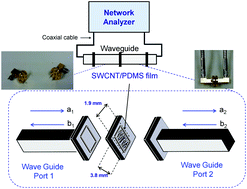Nanoelectromagnetic of the N-doped single wall carbon nanotube in the extremely high frequency band
Abstract
Materials offering excellent mechanical flexibility, high electrical conductivity and electromagnetic interference (EMI) attenuation with minimal thickness are in high demand, particularly if they can be easily processed into films. Carbon nanotube films deposited on a PDMS substrate combine these requirements. In this work, the potential of single wall carbon nanotubes (SWCNT) deposited on flexible polydimethylsiloxane (PDMS) polymer substrates for EMI attenuation is demonstrated. A 6-micrometer-thick SWCNT film exhibits EMI shielding effectiveness of 24.5 decibels in the extreme high frequency band (EHF), reaching 40 decibels when the SWCNTs are N-doped, which is one of the highest specific EMI attenuation performances optimized with film thickness realized to date. This performance stems from the good electrical conductivity of N-SWCNT films (150 Siemens per centimeter) and possible internal multireflections within the SWCNTs network. The excellent mechanical flexibility and easy coating processing enable them to sheathe complex shaped surfaces while providing high electromagnetic interference attenuation efficiency.



 Please wait while we load your content...
Please wait while we load your content...